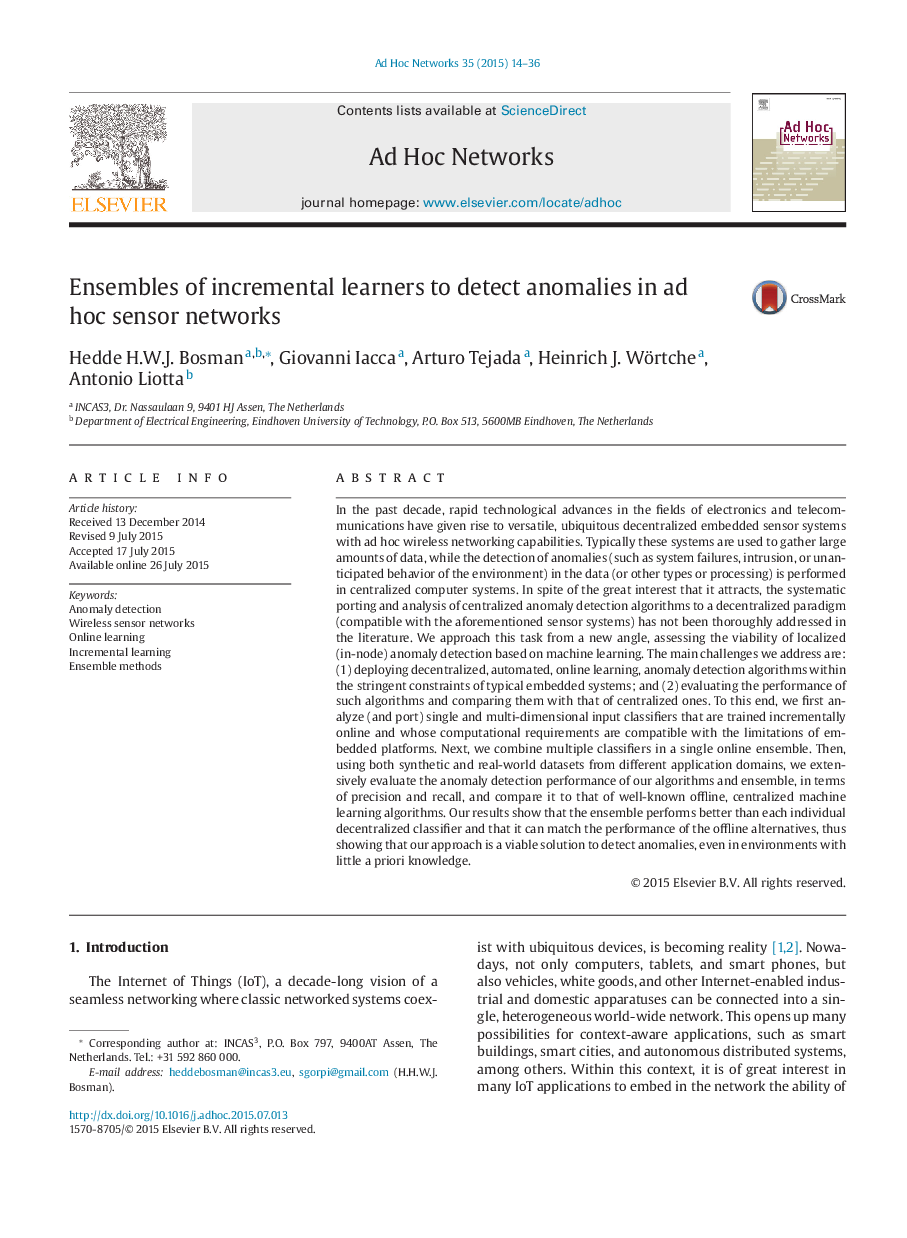ترجمه فارسی عنوان مقاله
گروهی از زبان آموزان افزایشی برای تشخیص ناهنجاری ها در شبکه های حسگر ad hoc
عنوان انگلیسی
Ensembles of incremental learners to detect anomalies in ad hoc sensor networks
| کد مقاله | سال انتشار | تعداد صفحات مقاله انگلیسی |
|---|---|---|
| 67545 | 2015 | 23 صفحه PDF |
منبع

Publisher : Elsevier - Science Direct (الزویر - ساینس دایرکت)
Journal : Ad Hoc Networks, Volume 35, December 2015, Pages 14–36
ترجمه کلمات کلیدی
تشخیص ناهنجاری؛ شبکه های حسگر بی سیم؛ آموزش آنلاین - یادگیری افزایشی؛ روشهای گروه
کلمات کلیدی انگلیسی
Anomaly detection; Wireless sensor networks; Online learning; Incremental learning; Ensemble methods

